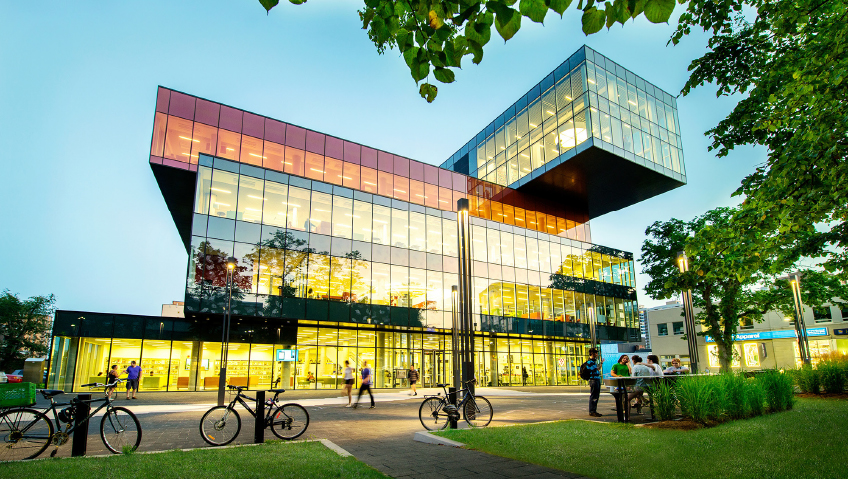The past few years have created some uniquely difficult challenges for the logistics sector due to a number of factors, particularly the ongoing pandemic coupled with worldwide geopolitical and economic crises. Large-scale supply chain interruptions, perplexing new rules and restrictions, and turbulent shifts in consumer demand, have all adversely affected almost every single area of the industrial segment, with a domino effect that will linger in the coming years.
However, the logistics sector continues to pivot in this new age by utilizing cutting-edge technology, procedures, and standards, and embracing new trends to help combat the effects of these complex issues.
As global trade bodies and governments work tirelessly to smooth dynamics and ensure efficient international trade, there will undoubtedly be some new challenges in the coming years. The impact of the crisis in Russia and Ukraine has also created a huge supply and demand gap in global trade markets, and shortages in exports from these two economies and higher prices for staples such as grains and fuel will ultimately slow global GDP growth. In fact, global GDP growth in 2022 is expected to decline by 0.7-1.3 percentage points to a range of 3.1-3.7 percent.
Pandemic lockdowns impacted procurement and other supply chain processes, while factors such as container shortages and supply side capacity issues combined to create high transportation costs. In addition, intercompany costs, including barge and truck load factors, are expected to increase from two to three percent, ultimately increasing overall transportation costs.
The outbreak of the pandemic in early 2020 and subsequent country-imposed lockdowns created severe labour shortages at all major ports around the world, increasing laden vessels, freight lines and container shortages, combined with higher commodity prices around the world and higher fuel costs that added to the already weak global trade situation, just as the world was beginning to adjust to the volatile conditions.
However, health experts around the world have predicted that Covid could become endemic this year, meaning related lockdowns and travel restrictions will be eased by governments everywhere, smoothing and accelerating global supply chains, and returning delivery times to their pre-pandemic normal.
In the meantime, numerous advances are being made to both combat the ongoing effects of the pandemic’s upheaval and to help avoid such severe disruptions in the future. Advances in the use of deep technology in logistics and global trade with networked logistics vital for current and future shippers are playing a key role among MSME exporters in managing shipments in a cost-effective and timely manner. Using computer vision-enabled tools in a connected logistics network to monitor inventory and loss or theft of goods in transit is an example of how digitization can improve shipping and other logistics processes.
Similarly, IoT-based sensors can detect cargo pressure and temperature, which can be managed during transit. Technologies such as AI, machine learning, computer vision, IoT network, and especially blockchain, can be used creatively and strategically to simplify shipping-related operations. Ideally, implementing blockchain-based tools could save the shipping sector $38 million annually.
As new cloud-based systems and integrations continue to be created and distributed, logistics companies are now able to optimise operations, store and transfer information more quickly and securely, and even have more control over finances. Some financial service companies have intervened to help carriers with specific technology connections and speed up payment. That ultimately translates into time and money savings for organizations as well as improved internal workflows.
While tech aficionados have long discussed the potential of autonomous vehicles, in many respects, these robotic transportation systems already exist. It’s currently possible for autonomous trucks to operate under “supervised autonomy,” and it’s only a matter of time before this supervision is no longer required. Autonomous vehicles have the potential to be safer, more affordable, and simpler to operate than manually driven vehicles if they are properly designed and tested. This in turn lowers operating costs, maintains road safety, and makes it possible for vehicle operators to find new, higher-level jobs in their respective businesses.
Additionally, logistics businesses are ready to incorporate more machine learning, Artificial Intelligence (AI), and Augmented Reality (AR) into the systems, which will decrease the need for staff time while boosting productivity and overall capabilities.
Logistics digitalization is a vital requirement for businesses that wish to survive in a competitive market, and these innovative technologies became increasingly more important during the pandemic with increased demand for online purchases and a heavier workload on the logistics system.
The use of 5G devices in distribution centres and warehouses can alert users when stock levels are low, indicate technical issues, and schedule maintenance. The efficiency of warehouse managers can also be increased with AR-capable equipment, potentially allowing where a warehouse employee to locate a product amid thousands of identical items rapidly. By using colour or animation to highlight the necessary item, a smartphone or AR glasses, thanks to the use of 5G, networks can move a lot of data and generate these visuals in real-time, helping avoid delays in shipments to consumers.
On the shipment side, one of the major issues in the past few years has been a lack of truck drivers. According to the logistics sector, there were approximately 80,000 job openings worldwide in 2021, when the shortage of drivers peaked. There are numerous factors causing this issue, and again, self-driving cars may offer a win-win solution to the labour shortage in logistics and freight.
In the midst of dealing with a variety of post-pandemic challenges, businesses can’t ignore the continuing threat of climate change. The mission to become a carbon neutral industry and achieve the goal of reducing carbon emissions by 50 percent by 2050 encourages all stakeholders to start implementing sustainable trading practices, a trend that is expected to gain momentum and force businesses around the world to adopt green infrastructure.
Electric vehicles also offer more cost-effective and environmentally friendly transportation, particularly as the issue of climate change and pollution receives increasing attention, and the sustainability topic becomes more important in many areas of both personal and work life. The same applies to logistics: eco warehouses are one of the key technological developments, aiding transportation and logistics organizations by decreasing storage expenses and boosting profit in addition to lowering a company’s carbon impact.
Warehouse Management Systems (WMS) support green warehousing as well, minimizing environmental damage by making the best use of resources like plastic, paper, power, and gasoline, to name a few. A WMS, for instance, might assist warehouse staff in coordinating their actions for product packing.
Deploying robots to sort and pack goods in warehouses can significantly reduce wage expenses, in addition to increasing cleanliness standards by reducing human interaction, which improves logistical security. Robots can also work in the dark, which reduces power consumption, and they don’t require breaks for lunch or rest, which helps businesses meet or exceed KPIs.
Robots move big shipments through the warehouses and gather the inventory for incoming orders by planning the quickest routes ahead of time, efficiently preparing the shipments, and transporting the products to the handover location where the next robot assumes control. While the functionality of modern robots is still quite distant from that of science fiction films, they can already carry out simple duties and help employees in daily professional lives. Currently, robots are employed in commissioning, for instance, to lighten the labour of warehouse employees, and are primarily utilised in consumer goods warehouses and e-commerce.
Logistics will be significantly impacted by digitization in the coming year. Numerous advances have already been made, and new technologies will continue to be created, simplifying operations and boosting supply chain stability globally. By embracing the megatrend of sustainability, the logistics sector as a whole will embark on a revolutionary journey with the challenge to retain the financial viability of logistics enterprises while balancing logistics with nature.
The world is currently seeing a significant upheaval brought on by digitization and climate change, and those businesses that adapt to it early on and actively participate in the introduction of new technologies will successfully emerge.
No one could have foreseen the sweeping impact the pandemic would have on the industrial world, and how it would forever change the face of how businesses conduct their daily operations, but the logistics sector in particular has continued to develop and adopt new technologies to increase productivity, safety and sustainability in a wide variety of areas.
It has been undeniably proven in recent years just how easily supply networks can break down under specific circumstances. In light of this, logistics is continuously becoming more diversified to reduce this risk in the future by employing technology, creativity and the blending of robotics and human ingenuity to avoid the situations we’ve endured since 2020.






